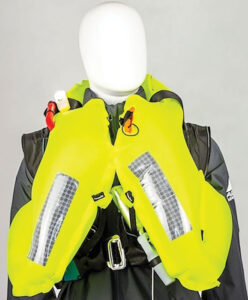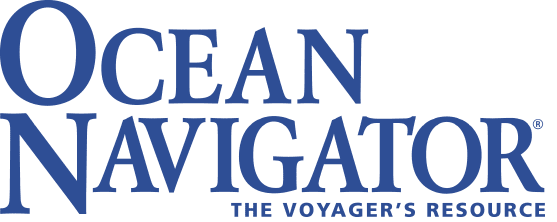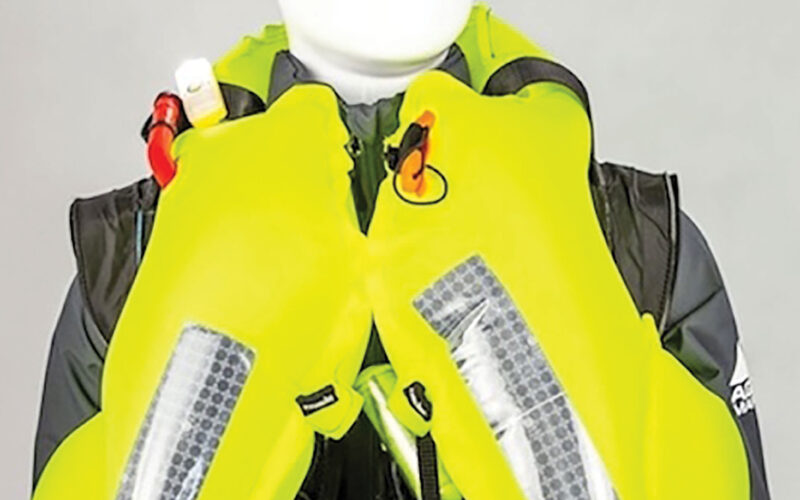
British life jacket manufacturer Team O has introduced a new personal flotation device that should draw interest from offshore sailors and cruisers. The 150N Hi-Lift life jacket floats the wearer higher in the water, reducing the possibility of him/her swallowing salt water when thrown overboard.
The jacket was designed by company founder Oscar Meade who started the business with his sister Lauren before the pandemic. They introduced the 150N Hi-Lift at the METSTRADE show in Amsterdam last November, where it won the safety category and was the overall winner in the DAME Design Awards.
“Oscar tore up the rulebook and started from the beginning, re-deploying the buoyancy below the waterline to push you up higher,” said Team O marketing manager Hermione Barfield. “It performs 60 percent better than the next best life jacket and 120 percent better than the industry standard.”
The 150N Hi-Lift is the outgrowth of a previous innovation that Meade made when he developed the Team O back-tow life jacket. Lauren was participating in a sailboat race in the English Channel and a crewmember on a different boat died after falling overboard. He was tethered by a harness to his lifejacket. When he went over, he was towed face down in the water and drowned.
After that tragedy, Oscar developed the back-tow life jacket. “He said, ‘We need to re-think this,’” said Barfield. When a sailor in a traditional tethered harness falls overboard, he/she inevitably ends up face down in the water. On the back-tow jacket, you pull a handle and it brings a strap up over your shoulder and it turns you into a seated position so your head and face are out of the water.
The back-tow design got Team O some initial interest, but then the pandemic hit and the young company faced supply-chain difficulties. More recently, Team O appointed Bainbridge as an international distributor. The increased income from orders let Team O go into production.
Then Oscar designed the Hi-Lift, which has a smaller, twisted bladder than competitive life jackets. It’s equipped with crotch straps and connects the wearer to the boat via a tether. “Jackets got bigger and bigger and it’s all wasted buoyancy,” said Barfield. “You’ve got huge amounts of performance for where he put the buoyancy.”
To test the Hi-Lift design, Oscar and Barfield put on the jacket and jumped into The Solent, a straight between the Isle of Wight and Great Britain known for nasty conditions. “We had 16 to 20 knots of wind and we put on a conventional jacket and then we put on the Hi-Lift and it was so different,” said Barfield.
As with any life jacket, one of the biggest challenges with the Hi Lift is getting people to wear it. The 150N is designed to sit behind the neck and be more comfortable. “We need to educate people that they’re definitely safer wearing it than not,” said Barfield.
The 150N Hi-Lift retails for about $360 and Bainbridge is working to develop distribution in the United States.

